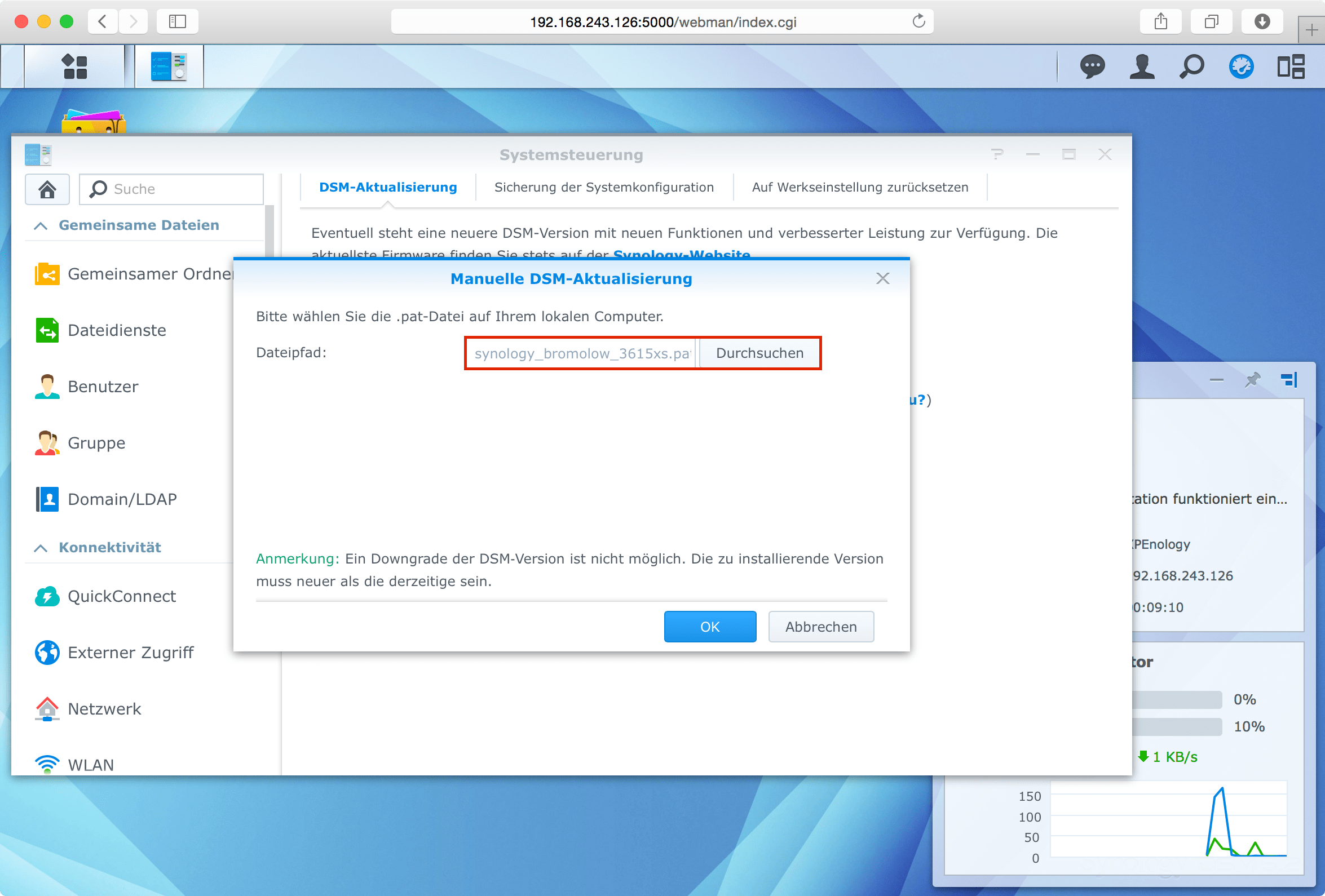
- Xpenology dsm 6.2 install#
- Xpenology dsm 6.2 update#
- Xpenology dsm 6.2 upgrade#
- Xpenology dsm 6.2 zip#
Create the file /usr/local/etc/apache24/sites-enabled/apache_nf with PuTTy and inserts the following lines:. Restart the nginx with synoservice -restart nginx. If the value is higher than 600, adjust the value in /etc/nginx/nf. Open the file and delete the timeout entry there. In the error message you can see in which file the timeout was set. If you have installed a package that sets the timeout itself (e.g. Add the entry proxy_read_timeout 600 at the end. Open the file /etc/nginx/nf in PuTTY (as root). You don’t know when the installation is finished and if you refresh the page too early, there is a chance that the installation is broken. This can lead to a timeout, the installation is still getting finished in the background and you just have to reload the page, but the whole thing is a bit cumbersome. Next, you have to increase the web server timeout, the installation process can take some time, especially on weaker DiskStations. You can read more about running Nextcloud as a virtual Host, in this article. It is best to use a virtual host, this prevents some problems and you can configure Nextcloud better. Activate the following extensions: bcmath, bz2, curl, ftp, gd, gmp, iconv, intl, mysqli, openssl, pdo_mysql, posix, ssh2, zip, zlib. The whole thing could look like this: /tmp:/var/services/tmp:/var/services/web:/volume1/nextcloudData Now add the path to the shared folder that you created earlier (don’t forget the colon). Activate “Customize PHP open_basedir” and enter /tmp:/var/services/tmp:/var/services/web. Open the Web Station and create a new profile under PHP settings. If you have activated the option to hide the folder from unauthorized users, you should no longer see the folder in the File Station. Otherwise, Nextcloud cannot access the folder. Enter the following 2 commands: chown http:http /volume1/nextcloudData To run the commands as root, type sudo –i and press Enter. For details see section “PHP profile”.Īctivate the SSH service under Control Panel > Terminal & SNMP. The colon (:) separates the individual paths. Insert the path at the end of the “custom open_basedir” field. To allow PHP to also access the shared folder, the path must be entered in open_basedir. Create the shared folder via DSM > Control Panel > Shared Folders, if you create the folder via PuTTY, DSM does not recognize it and you e.g. Those changes should only be done via PuTTY as root, otherwise the ownership will change and Nextcloud can no longer access the folder/files. Nobody else should have access to the shared folder and even as an administrator you should only make changes there if they affect your Nextcloud installation. 

Xpenology dsm 6.2 upgrade#
This also makes it easier to upgrade Nextcloud later on. For security reasons, Nextcloud recommends creating the storage location outside of the /web folder. Nextcloud saves the files by default in the data folder under /web/Nextcloud. Shared folderĬreate a new shared folder that will be used to store your files. Open MariaDB 10 and tick “Activate TCP / IP connection”.
Xpenology dsm 6.2 install#
Install following packages via Package Center: You can set up a vhost for Nextcloud that uses Apache, then you can switch the rest of your DS back to nginx. So far, there is no working configuration for Synology in the community. Nextcloud does not run under nginx without configuring it beforehand. Important: If you use nginx as a web server, you have to switch to Apache HTTP Server 2.4 in the Web Station under General Settings > HTTP Backend Server. Now Nextcloud can be finally updated to use PHP 7.4.īefore we can start, check whether the Web Station is running or installed, if you haven’t already.

Xpenology dsm 6.2 update#
The new version is already available on Synology’s home page and should be soon also available via update in the Package Center.
Xpenology dsm 6.2 zip#
Synology updated their PHP 7.4 package and added the support for zip module.







 0 kommentar(er)
0 kommentar(er)
